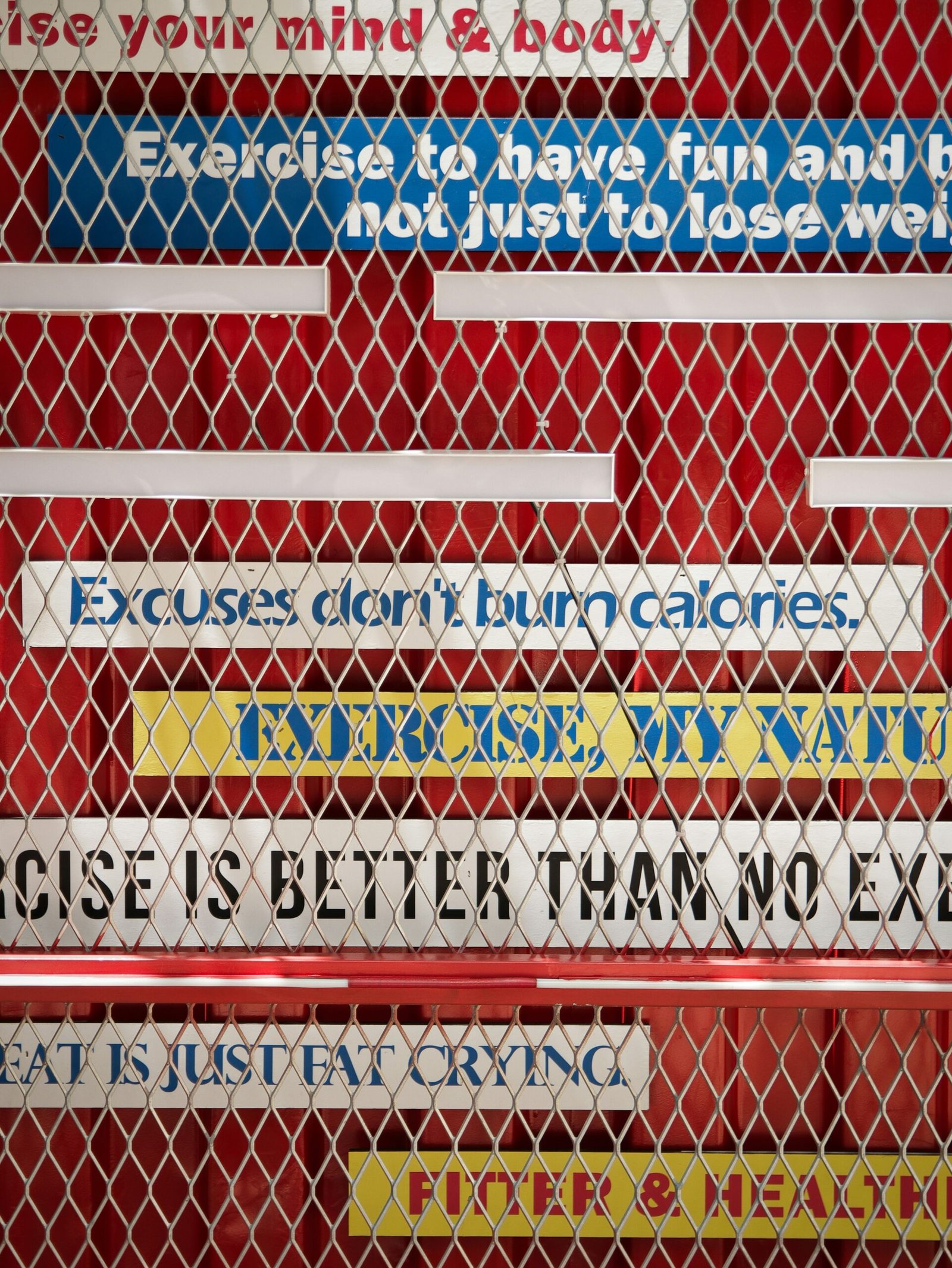
Introduction to Home Workouts
In recent years, home workouts have gained immense popularity, primarily due to their convenience and effectiveness in promoting fat loss. The rise of digital platforms and fitness apps has made it easier than ever for individuals to access high-quality workout routines from the comfort of their homes. As people increasingly look to balance busy schedules and maintain fitness routines, home workouts have emerged as a viable option for many.
The current global landscape has further propelled the trend of working out at home. With gym closures and recommendations for social distancing, individuals have been prompted to seek alternative methods to maintain their physical health. Home workouts allow participants to engage in fitness activities at their own pace, tailored to their available space and equipment. This flexibility has proven to be beneficial for a diverse range of fitness levels, from beginners to advanced practitioners.
One of the most significant advantages of exercising at home is the elimination of commute time, enabling users to seamlessly integrate physical activity into their daily routine. This accessibility fosters a consistent workout regimen, which is critical for effective fat burning. Additionally, home workouts often require minimal or no equipment, making fitness achievable for those on a budget or with limited space.
Moreover, the psychological aspect of working out at home can be empowering. Individuals can create their desired environment, free from the perceived pressures of a traditional gym setting. This autonomy allows for a more personalized approach to fitness, leading to higher motivation and adherence to workout schedules. Whether it involves high-intensity interval training, bodyweight exercises, or yoga, home workouts provide a tailored solution that meets individual preferences and goals.
Understanding Fat Loss: The Science Behind It
Fat loss is fundamentally rooted in the concept of caloric deficit, which occurs when the number of calories expended exceeds the amount consumed. This principle acts as the cornerstone of any effective weight loss strategy. The human body utilizes energy derived from food to perform daily activities, maintain essential functions, and fuel exercise. When the calorie intake is consistently lower than the calories burned, the body turns to stored fat for energy, resulting in fat loss over time.
Metabolic processes play a crucial role in this energy balance. Metabolism comprises various biochemical reactions that convert food into energy. It consists of two primary components: catabolism, which breaks down molecules to release energy, and anabolism, which uses this energy to construct components of cells and tissues. The efficiency of these processes can vary from individual to individual, influenced by factors such as age, gender, muscle mass, and overall fitness levels.
For optimal fat loss, combining exercise with proper nutrition is vital. Exercise, particularly aerobic and high-intensity interval training (HIIT), significantly increases the number of calories burned during and after workouts. HIIT, which alternates between periods of intense effort and rest, is especially effective as it not only burns calories but also enhances metabolic rate, leading to increased calorie expenditure long after the workout has finished. This post-exercise calorie burn, known as excess post-exercise oxygen consumption (EPOC), can contribute to more substantial fat loss over time.
Proper nutrition should complement your exercise routine to expedite fat loss. A balanced diet rich in whole foods provides essential nutrients while helping maintain an optimal caloric deficit. Key components include lean proteins, healthy fats, and a variety of fruits and vegetables, which not only supply necessary vitamins and minerals but also promote satiety, further aiding in weight management.
Types of Workouts for Fat Burning at Home
Engaging in diverse workouts is essential for an effective fat-burning routine at home. The three primary categories that stand out for their effectiveness in burning fat are cardiovascular workouts, strength training, and high-intensity interval training (HIIT).
Cardiovascular workouts elevate heart rate and burn calories efficiently, making them an excellent choice for fat reduction. Common exercises include jumping jacks, running or jogging in place, and cycling on a stationary bike. These activities not only contribute to fat loss but also improve overall cardiovascular health. One can incorporate 20 to 30 minutes of cardio into their daily routine to see significant benefits.
Strength training, although often associated with muscle building, plays a vital role in fat burning as well. This training increases muscle mass, which in turn boosts metabolism, facilitating greater calorie burn even at rest. Effective strength training exercises that can be done at home include push-ups, squats, and lunges. Utilizing household items, such as water bottles or backpacks filled with books, can further enhance resistance training, making it accessible to everyone.
High-intensity interval training (HIIT) combines short bursts of intense activity with periods of rest or lower-intensity exercises. This method has gained popularity for its efficiency in burning fat in a shorter time frame. A typical HIIT session might involve doing burpees, mountain climbers, or high knees for 30 seconds, followed by a 15-second rest. Such workouts can be completed in as little as 20 minutes, making them a practical option for those with tight schedules.
By diversifying your workout routine to include these categories, you can enhance your fat-burning potential and achieve your fitness goals effectively from the comfort of your home.
Sample Fat-Burning Home Workout Routines
Creating effective home workout routines can greatly enhance your fat-burning efforts, allow you to stay fit, and provide convenience. Below are several sample routines that cater to different fitness levels, each designed to maximize fat-burning efficiency through high-intensity exercises.
For beginners, a full-body routine that lasts about 20-30 minutes can be beneficial. This can include exercises such as bodyweight squats, modified push-ups, and planks. Start with a five-minute warm-up of brisk walking or jogging in place, followed by three sets of 10-15 repetitions for each exercise with 30 seconds of rest in between. This routine promotes the development of foundational strength while effectively engaging different muscle groups, helping to burn calories.
Intermediate exercisers may benefit from a 30-45 minute circuit routine that incorporates both cardio and strength elements. For example, one could perform 30 seconds of jumping jacks, followed by 30 seconds of lunges, then 30 seconds of mountain climbers, repeated for three rounds. Adding exercises like burpees and kettlebell swings can enhance the intensity, driving the heart rate up and facilitating fat loss.
For those at an advanced fitness level, a high-intensity interval training (HIIT) session lasting about 20-30 minutes can yield significant results. This structure might include 40 seconds of work followed by 20 seconds of rest, cycling between exercises such as squat jumps, high knees, and push-ups. This format not only elevates the metabolism but also encourages muscle retention while shedding unwanted body fat.
Each of these routines can be modified to suit individual comfort and experience levels, ensuring that everyone can engage in effective fat-burning workouts at home. Prioritizing consistency and progression will lead to optimal results over time, ultimately enhancing overall fitness.
Creating a Sustainable Workout Schedule
Establishing a workout schedule that is both effective and sustainable is pivotal for individuals seeking to burn fat through home workouts. A well-structured plan not only helps in achieving fitness goals but also encourages consistency, which is vital for long-term success. The first step in creating this schedule is to set realistic fitness goals. Consider your current fitness level, available time, and personal preferences. Goals should be specific, measurable, achievable, relevant, and time-bound (SMART). For instance, rather than aiming to lose weight, a more defined goal could be to lose five pounds in a month through daily exercises combined with a balanced diet.
Another crucial aspect is to maintain a balanced approach to your workout days and rest days. Overtraining can lead to fatigue and ultimately burnout, which hinders progress. A common recommendation is to incorporate at least one to two rest days each week. These days can be active recovery days, where you engage in light activities such as walking or yoga, allowing your body to recuperate while still remaining active. Furthermore, varying your workouts is essential for preventing monotony and overuse injuries. Mixing cardio, strength training, and flexibility exercises can keep your routine engaging. For example, dedicating specific days to high-intensity interval training (HIIT) followed by strength training can optimize fat burning while maintaining interest in your regimen.
Lastly, consistency is key, and maintaining a calendar or planner can assist in tracking your workouts and progress. It is advisable to adjust your schedule according to how your body feels, ensuring that you are both physically and mentally invested in your journey to burn fat. By following these strategies, individuals can create a sustainable and effective workout schedule that aligns with their goals and lifestyle.
Incorporating Nutrition for Enhanced Fat Loss
Achieving effective fat loss is greatly influenced by nutrition, which serves as an essential counterpart to any home workout routine. To maximize results, it is important to focus on macronutrient balance, portion control, and overall dietary choices. Macronutrients—proteins, carbohydrates, and fats—play specific roles in the body, and their appropriate distribution can significantly enhance fat burning. A common recommendable approach is to adopt a higher protein intake, which can help increase satiety and preserve lean muscle mass during weight loss.
Meal prepping is another strategy that effectively aligns one’s diet with workout goals. By planning and preparing meals in advance, individuals are more equipped to make healthier choices and avoid the temptation of processed foods that are often high in unhealthy fats and sugars. A well-structured meal plan can ensure that meals are rich in nutrients and aligned with personal caloric and macronutrient needs. Benefits of meal prepping include not only saving time during busy weekdays but also enabling better control over portion sizes and ingredients.
Hydration also plays a crucial role in a successful fat-loss journey. Drinking adequate amounts of water supports metabolic processes, aids in digestion, and can help manage appetite. Studies indicate that consuming water before meals may reduce calorie intake, making it a simple yet effective strategy to support a reduced-calorie diet. Furthermore, balancing electrolytes is essential, particularly for those engaging in high-intensity workouts, as it ensures optimum performance and recovery.
Incorporating these nutritional strategies alongside regular home workout routines can yield significant fat loss results. Emphasizing a balanced diet, being mindful of what and when to eat, and maintaining proper hydration can create a synergistic effect that accelerates the fat-burning process, leading to more effective outcomes overall.
Staying Motivated While Working Out at Home
Maintaining motivation while exercising at home can pose challenges, but there are several effective strategies that can significantly enhance your commitment and engagement. One of the most impactful techniques is to establish a dedicated workout space. Designating a specific area in your home exclusively for physical activity helps create a mental association between that space and your workout goals. This could be as simple as a corner in your living room, equipped with some basic workout gear such as dumbbells and a mat. A dedicated space not only minimizes distractions but also reinforces the habit of exercising regularly.
Tracking your progress is another vital strategy for sustaining motivation. Utilizing a workout journal or fitness app allows you to set clear goals and monitor your achievements. Recording the number of calories burned, the duration of your workouts, and even personal bests can give you a tangible sense of accomplishment. Many individuals find that visual progress—such as charts or graphs—can serve as a powerful motivator. This practice not only makes your efforts feel rewarding but also helps identify areas for improvement, which can lead to enhanced performance over time.
Finally, joining online fitness communities can provide a significant boost to your motivation. Engaging with like-minded individuals who are also on a fitness journey can create a sense of camaraderie and accountability. Social media platforms and dedicated fitness forums offer countless opportunities to share experiences, exchange tips, and encourage one another. Being part of a community can help you stay accountable to your goals and make the entire process feel more enjoyable.
By implementing these strategies—setting up a dedicated workout space, tracking your progress, and connecting with online fitness communities—you can cultivate an environment that fosters motivation and commitment to your home workout routines.
Common Mistakes to Avoid in Home Workouts
Home workouts offer flexibility and convenience, but they also come with specific challenges that can hinder effectiveness and safety. One of the most frequent mistakes individuals make is neglecting a proper warm-up. A warm-up is essential to prepare the muscles for exercise and reduce the risk of injury. Skipping this vital step can lead to strains or sprains, as your muscles may not be ready for sudden exertion. To avoid this mistake, incorporating dynamic stretches and light movements targeting the muscles you’ll be working is crucial.
Another common pitfall is maintaining incorrect exercise form. At home, without the guidance of a professional trainer, it is easy to unwittingly perform exercises incorrectly. Poor form not only diminishes the effectiveness of the workout but also increases the likelihood of injuries. To combat this issue, individuals should consider using mirrors for self-assessment or utilizing online resources, such as instructional videos, that demonstrate proper techniques. Taking time to learn the correct form can significantly enhance workout outcomes and reduce the risk of injuries.
Overtraining is another critical mistake to recognize. While the motivation to achieve fitness goals may drive individuals to push harder and longer, this often leads to fatigue and burnout. It is vital to listen to one’s body and incorporate rest days into the routine to allow muscles to recover. Recognizing the importance of recovery can help maintain a consistent workout schedule and prevent setbacks. Balancing workout intensity with adequate rest not only enhances performance but also ensures a sustainable approach to home workouts.
Conclusion: Your Path to Faster Fat Loss at Home
As we have explored throughout this blog post, effective home workout routines can significantly contribute to burning fat quickly and efficiently. From high-intensity interval training (HIIT) to strength-building exercises, engaging in these activities not only aids in fat loss but also enhances overall fitness levels. The flexibility of working out at home allows for customized routines that can fit into various lifestyles and schedules, eliminating common barriers that often deter individuals from pursuing their weight loss goals.
To recap, incorporating a mixture of cardiovascular exercises, strength training, and flexibility routines into your weekly plan is essential for maximizing fat-burning potential. Moreover, the convenience of at-home workouts means you can remain consistent, which is crucial for long-term success. Remember, the objective is not only to lose fat but to develop sustainable habits that promote overall well-being. It is vital to listen to your body and make modifications to these routines as necessary, ensuring that your journey is both safe and effective.
We encourage you to take action and start implementing these strategies today. Tailor the suggested workouts to suit your preferences and fitness level. By embracing this journey with confidence, you will not only work towards achieving your fat loss goals but also foster a healthier lifestyle. Each small step counts, and by committing to regular home workouts, you are investing in your long-term health and fitness. The road to faster fat loss may seem challenging, but with determination and the right approach, it is well within your reach.






